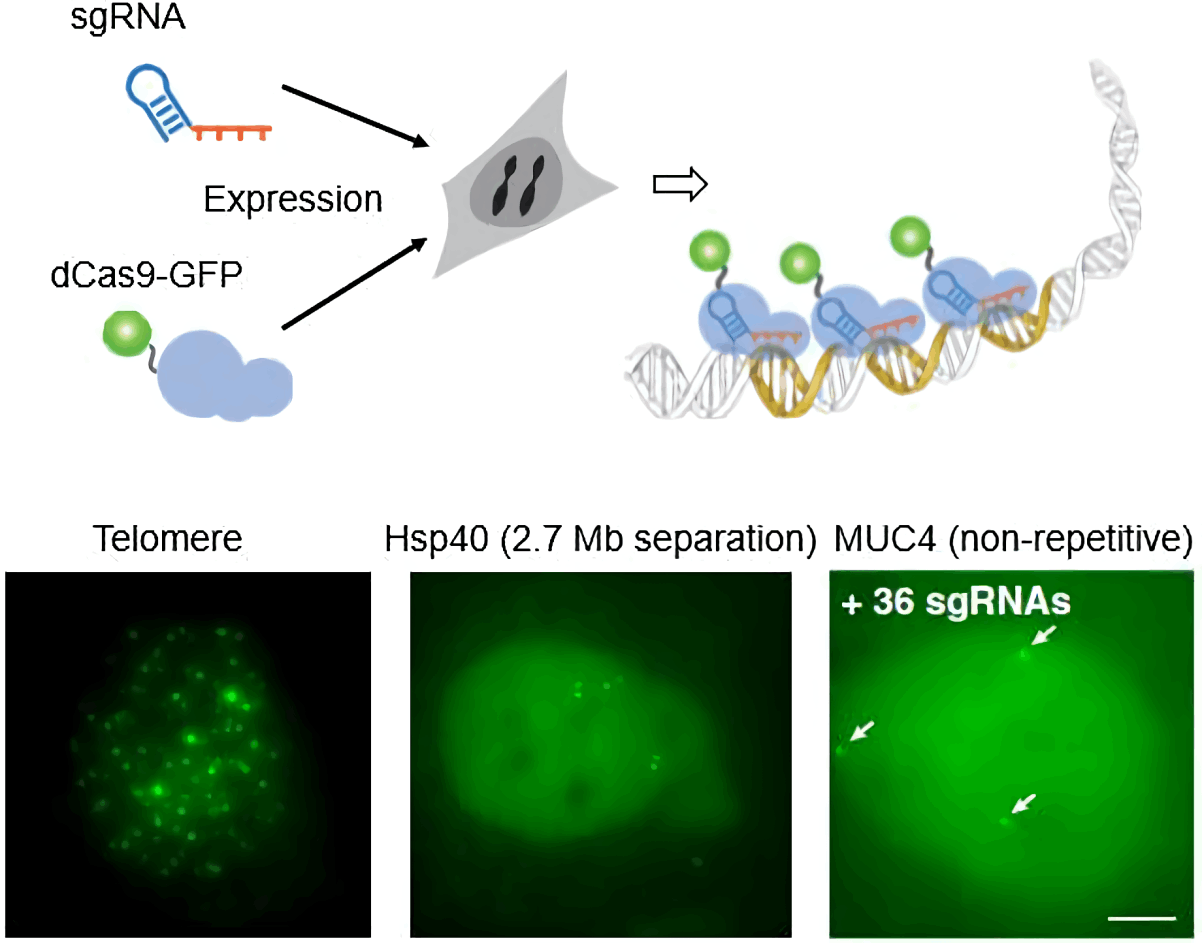CRISPR Imaging
Imaging the Genome in Living Cells
In addition to their applications in genome editing and gene expression regulation, programmable DNA recognition systems, including both CRISPR and TALE, have been recently engineered for the visualization of endogenous genomic elements in living cells. This capability greatly helps the study of genome function regulation by its physical organization and interaction with other nuclear structures. Please see our Methods in Enzymology book chapter for a detailed protocol to use the CRISPR/Cas9 system to label and image specific genomic loci, including the establishment of expression systems for dCas9-GFP and sgRNA, the procedure to label repetitive sequences of telomeres and protein-coding genes, the simultaneous expression of many sgRNAs to label a non-repetitive locus, and the verification of signal specificity by FISH.
The workflow for CRISPR imaging:
